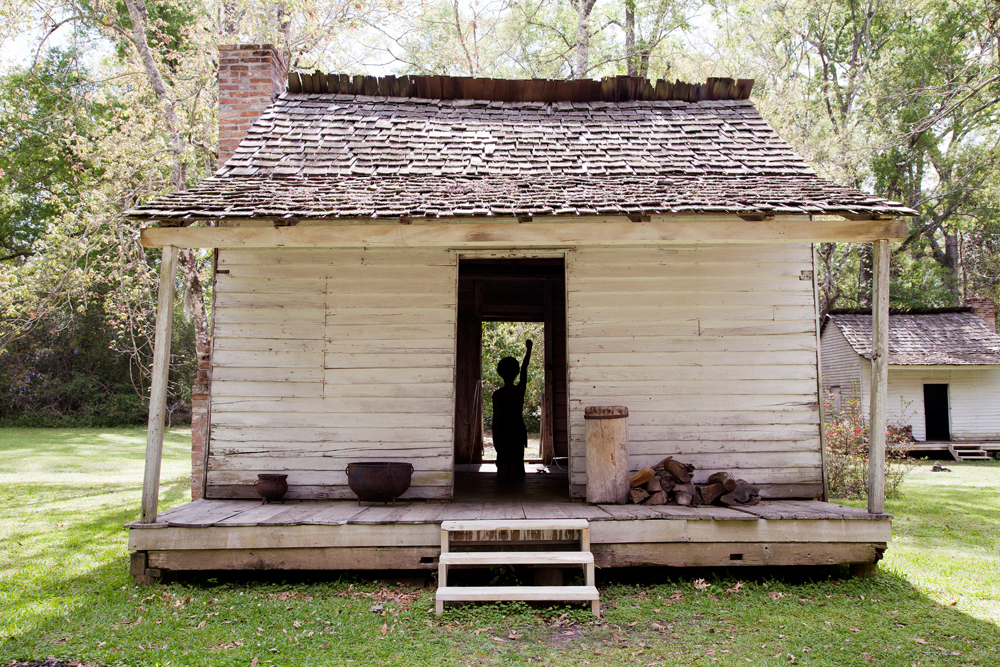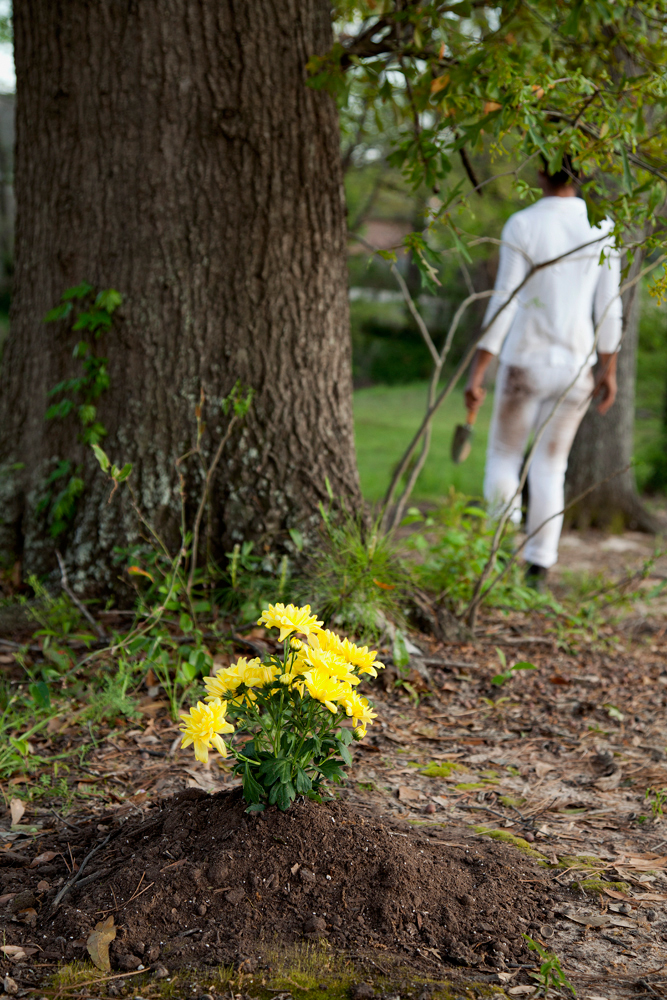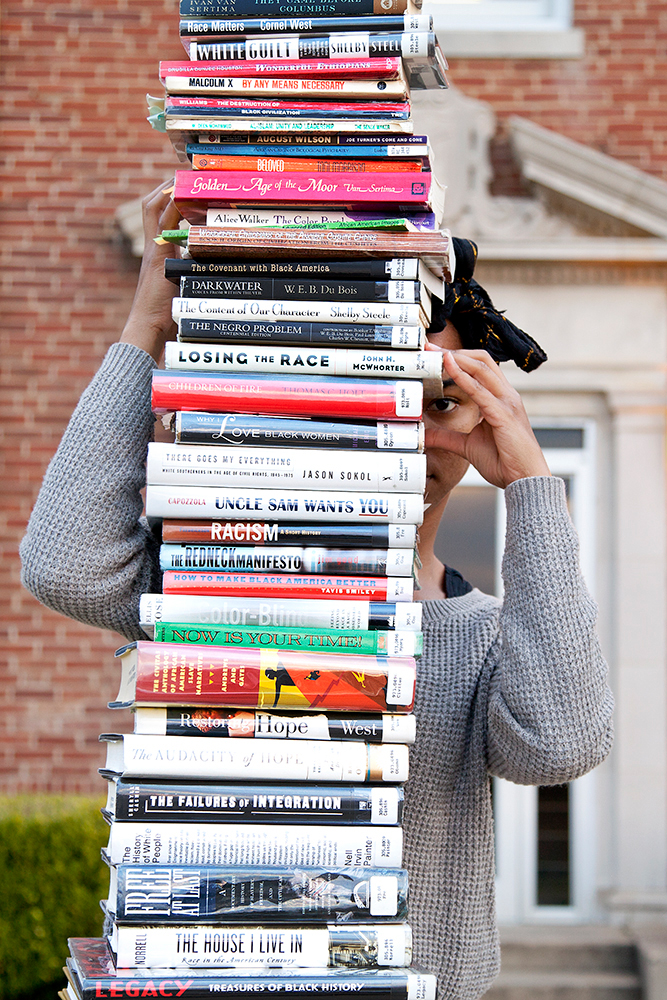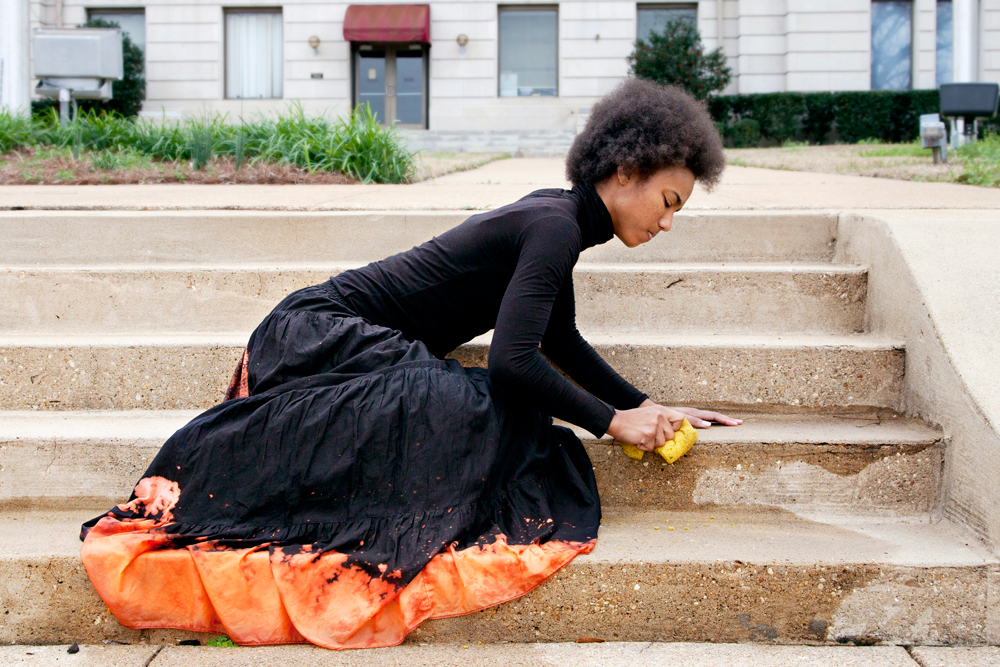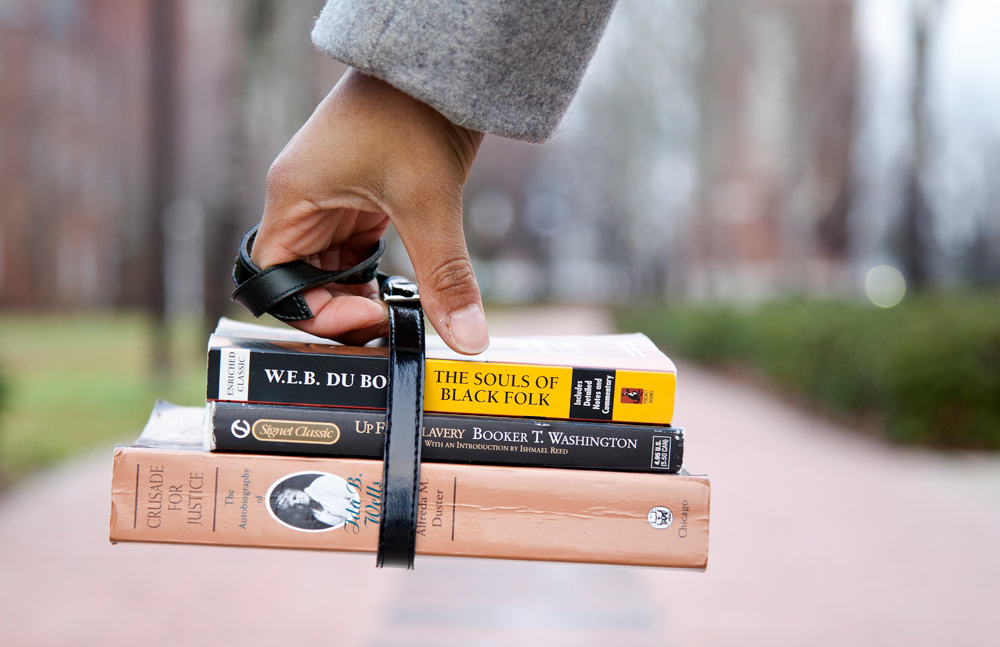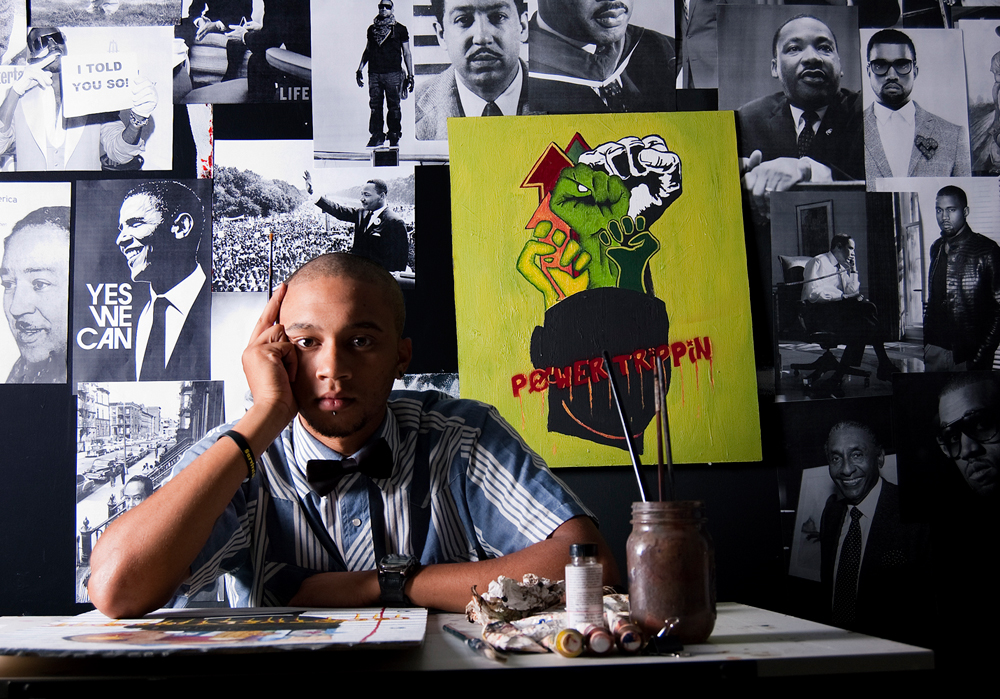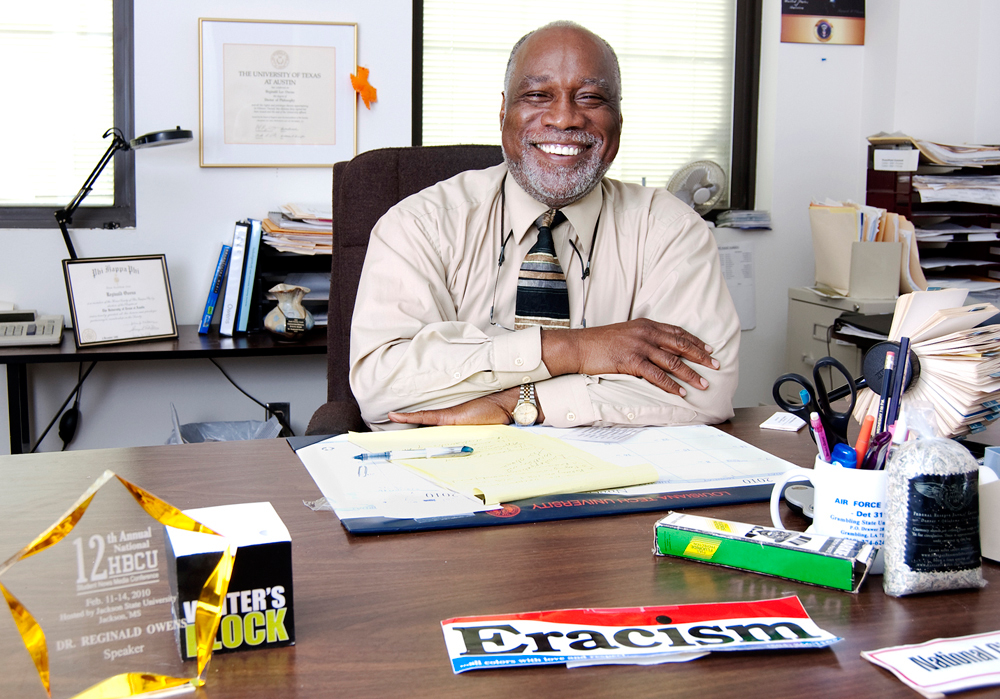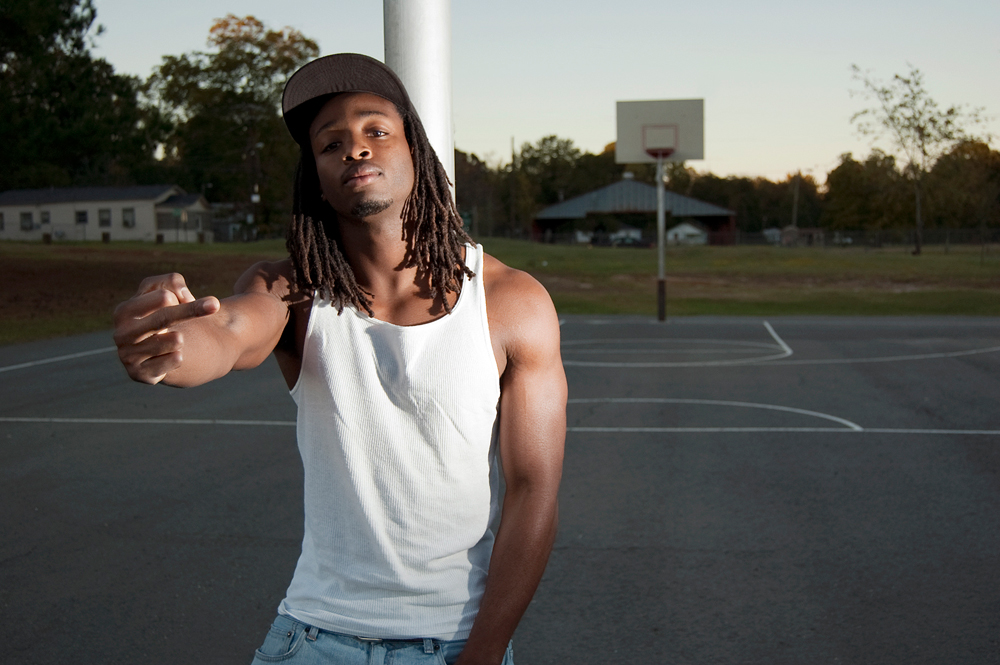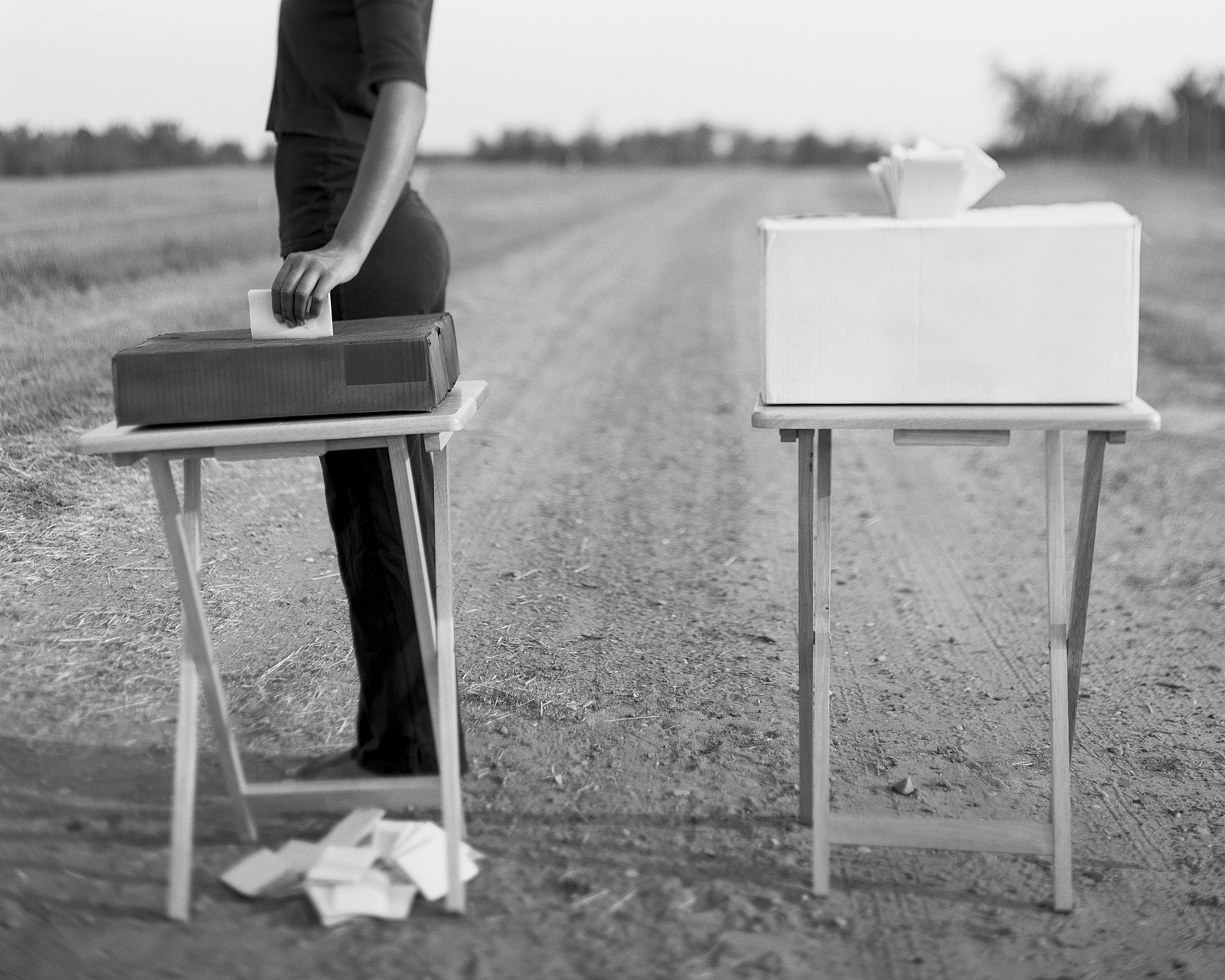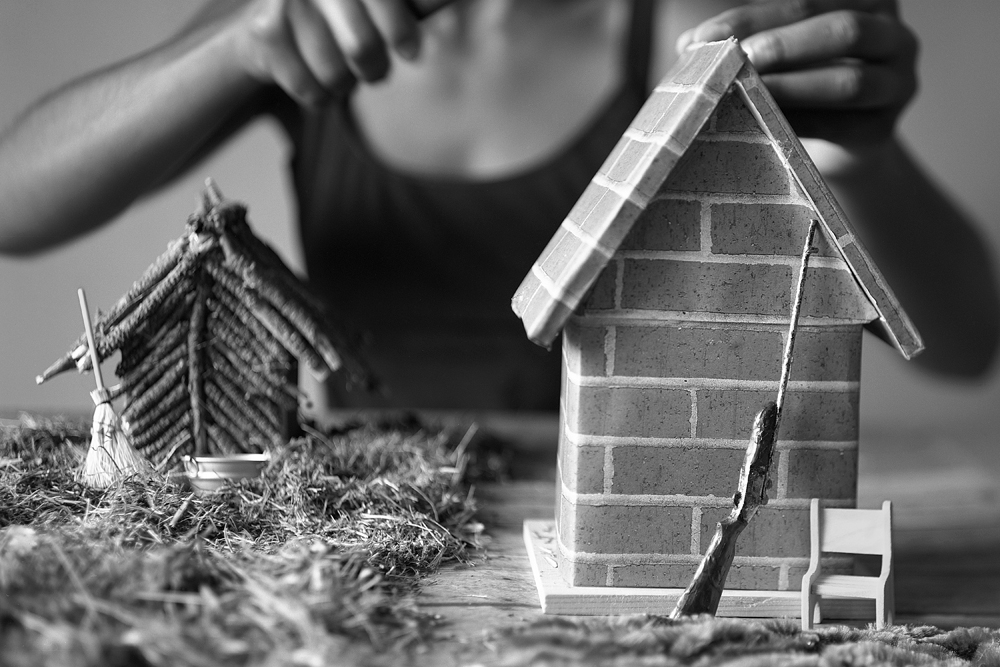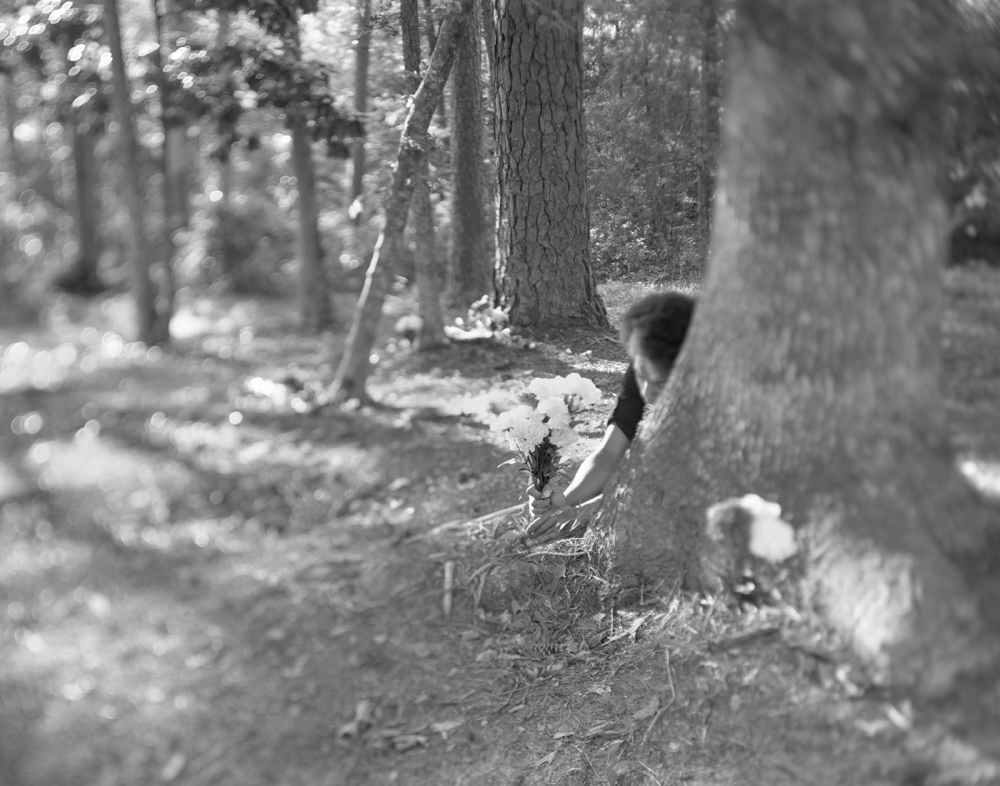Your Story, My Story and The Truth
PROJECT STATEMENT
African-Americans have been narrowly represented from the beginning of this country’s recorded history until now. America’s founding fathers ignored the work of my ancestors as African-American men were portrayed as barbaric creatures and the women as overly sexual females. While the writers have changed, the pattern continues as African-Americans are labeled through stereotypes, even by those of their own race. Your Story, My Story and The Truth presents an alternative version to history as I honor my ancestors by making self-portraits at different locations, some of historical nature. At each site, I engage in an activity, many of which those before me were restricted to complete during different times in history.
The falsehoods associated with African-Americans’ reputation cannot be obliterated, but they can be overpowered by images from another story—my story.
The foundation of this series lies in historical news articles, which I used as research tools during my attempt to connect the past and present. During my investigation, the most memorable articles were coupled with photographs of people acting out their beliefs. Whether fueled by love or hatred, viewers understood the messages before reading any captions. This series does the same as physical acts display my views about the world, revealing my suspicions about the past and my hope for the future.
Performing tasks at significant African-Americans sites combined my personal experiences at the locations with important occurrences from the past. I performed tasks at each location and photographed the act with the help of an assistant or a timer. Although knowing history is supposed to prevent certain tragedies from reoccurring, sluggish progress deceives people into being satisfied with complacency. Animosity toward African-Americans is prevalent, yet drastic situations are necessary in order for people to admit all things are not equal. The problems are obvious, however, coming up with solutions is the most difficult part of the equation. Action is necessary despite the obstacles involved. Talking about problems does nothing if no one is willing to put action behind the words spoken. Carrying out tasks at the locations is my way of being a part of the solution instead of the problem. Action changes things, and as I complete tasks, the images created will increase people’s knowledge and more importantly reiterate African-Americans’ existences and contributions to this country.
Another aspect of my work involves traveling within the Deep South. With the goal of working outside of the South after graduation, the project provides the opportunity to travel within an environment I often take for granted. Visiting sites in close range proved my ignorance regarding the historic importance of places I see and pass every day. Since visiting plantations was a normal routine during my childhood in South Louisiana, I overlooked the significance of standing on the land where my ancestors worked tirelessly day and night. Your Story, My Story and the Truth is more than a photographic series; it is the connection between myself, this land and my ancestors.
The progress made by African-Americans cannot be ignored but neither can the disparities between the treatment of minorities and the majority. As a freshman in college, I voted for and witnessed the election of the first African-American president of this nation. Four years later as a senior, I am trying to understand how a African-American teenager is dead and the man who shot him was not charged until weeks later although the police knew who committed the act. Change is inevitable despite its lethargic pace. Even in my moments of despair, I will be proactive, making improvements for future generations and respecting my ancestors by knowing and sharing their achievements. Your Story, My Story and the Truth is my attempt to better understand my heritage, yet in the process I have learned more about myself.
SELF VS. SOCIETY
PROJECT STATEMENT
Discrimination and stereotypes have created barriers for African-American men in America. Throughout history, African-American men have been labeled as dangerous, inhumane brutes. The emotional breakdown of African-Americans, especially males, dates back to slavery and was implemented in order to keep the body strong but the mind weak.
Fully aware of the historical reputations and stereotypical views of African-American males, I was compelled to communicate the ideas of men who are often forced to silently accept society’s treatment. As a means of analyzing current relationships between African-American men and today’s society, I conducted a survey. From the survey answers, I aimed to create images that reflected the attitudes and viewpoints of the participants. The men were asked about society’s views of them personally and their views of themselves or how they would like society to view them.
Since the subject matter is personal, shooting environmental portraits correlates with the intimate aim of the images. The works demonstrate the voices of African-American men. No answer was the same since the responses ranged from positive to negative, uplifting to degrading, and realistic to idealistic.
With the inclusion of two photographs of every subject, viewers are challenged to decide which image is society’s view versus the subject’s personal view. Hopefully, the challenge extends beyond the walls in which the photographs are viewed into a world full of unjustifiable predispositions.
ONGOING BATTLE

